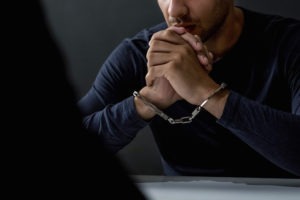
If you were injured in a car accident and the other involved driver does not accept responsibility, our personal injury lawyer can show you how to prove you were not at fault in a car accident. Your official car accident report, photos and videos, and statements from objective witnesses all help tell the story of the accident, point to its cause, and define liability.
A police report pulls a great deal of evidence together in a format that proves you were not at fault and that the other involved driver was. Once evidence of liability is presented to the at-fault driver’s insurance company, they are more likely to offer you an out-of-court insurance settlement rather than dispute your case in court.
What You Need to Know About Negligence in a Car Accident
If your accident occurs in a fault state, the person who caused the accident is responsible for its financial consequences. To prove the other involved driver was at fault, the law requires you to prove their negligence. That means proving the other driver:
- Owed you a reasonable duty of care
- Breached their responsibility to provide it
- Caused your physical injuries
- Caused your financial damages
Proving fault in a disputed car accident can be complex and will rely on the cumulative evidence compiled on your behalf. The car accident report generated by your accident is a key piece of evidence and will capture many of the details that prove where fault and liability belong.
These matters are time sensitive, however. In Maryland, the statute of limitations is three years for personal injury as described by Maryland Courts and Judicial Proceedings Code Section 5-101. It is three years according to Massachusetts General Laws Chapter 260 §2A as well. For personal injury or property damage, it is two years as laid out in Virginia’s code section 8.01-243. Our trusted lawyers will be able to help you navigate these codes and figure out the most appropriate action.
For a free legal consultation, call,
(888) 585-2188
Proving Fault Can Lead to Compensation
Very few car accident cases go to court in the U.S. Instead, once the evidence is weighed, most are settled out of court. Whether you pursue them through a settlement or in court, the damages you can collect from the at-fault party include:
- Accident-related medical bills
- Injury-related loss of wages
- Property damage or total loss
- Ongoing pain and suffering
Calculating your damages correctly and taking your time throughout the settlement process is important. Settling your case too quickly could mean all the expenses the accident caused are not yet clear. That means settling too soon could leave you with out-of-pocket expenses because a signed settlement agreement is final.
The Value of Your Car Accident Report
After a car accident, the at-fault driver’s insurance company is on their side. The weight of your evidence may help steer them toward a settlement, but they will require objective proof, and not just take your word against their client.
Your car accident report is an unbiassed piece of evidence and will contain valuable information for you, your lawyer, and the at-fault driver’s insurer including:
- Road and weather conditions
- Points of impact on each car
- The position of each car
The police report will note details like alcohol or drug involvement, distractions, and remarks made by each driver. It will also contain witness statements and contact information and may also contain police-generated photos and diagrams.
Complete a Free Case Evaluation form now
Additional Evidence that Supports Your Car Accident Case
Because smartphones are prevalent today, investigating your accident might uncover smartphone photos and videos that support your case. A canvass of the accident scene might also locate residential or commercial surveillance cameras with supporting evidence. Your medical records that describe the cause and severity of your injuries are also helpful.
Your collected evidence will also include your medical bills. proof of income, vehicle repair or replacement estimates, and a written prognosis. This evidence proves you were not at fault and is an important part of your fight for compensation because it will prove the monetary value assigned to your case.
Call or text (888) 585-2188 or complete a Free Case Evaluation form
Start Collecting Evidence Right at the Accident Scene
Much of the evidence you need to prove you did not cause a car accident can be found right at the scene. Unless your injuries prevent you from doing so, you can take pictures of both vehicles from a variety of angles.
Exchange personal, vehicle, and insurance information with the other driver and cooperate with the police at the accident scene, but do not make any comments about fault. Instead, wait to talk to a personal injury lawyer who can also contact the at-fault driver’s insurance company — and yours, if needed — on your behalf.
A personal injury lawyer near you can help with evidence collection. A lawyer can also explain personal injury and insurance law. He will interpret the weight of your evidence, present it to the at-fault party and their insurer, and negotiate an appropriate financial settlement.
Get a Free Review of Your Car Accident Case
If you were involved in a collision with another driver, our car accident lawyer can help you prove you were not at fault. Find out how hard our team works to collect evidence, prove liability, and fight for a favorable settlement. Contact one of our Jenner Law case review team members by filling out a contact form or calling (888) 585-2188 today.
